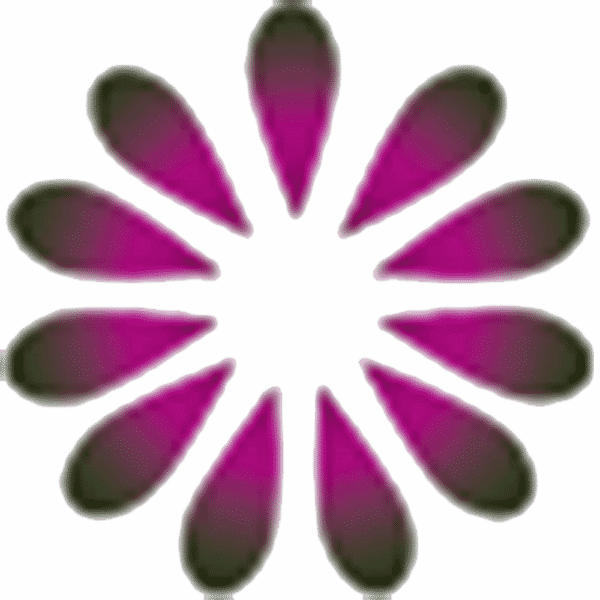Appearance of Sha during Paida often makes people, even some TCM doctors, suspicious and even scared. They assume that Sha is blood from ruptured blood vessels, and that it is harmful to health. This is misinformation.
Our blood vessels behave somewhat like a rubber hose: When the hose is free of blockages, slapping or pressing it makes the water in it flow to low pressure areas. Without toxins stagnating the flow in blood vessels, during Paida, clean blood will flow from the slapped area to other areas. This explains why there is little or no Sha in healthy people or healthy parts of the body. Sha is toxic waste filtered out of the blood and bodily fluids. Otherwise, it continues to exist in the body, causing stagnation, forming harmful, pathogenic substances, such as fat, phlegm, masses, tumors, dampness, etc.
Blood vessel walls are a tight, mesh-like structure. Toxic waste makes the blood dense and highly viscous, substantially slowing down its flow. When slapping on a stagnated area with toxins, Sha will be filtered out after a series of biochemical reactions between the toxins and the Qi boosted through Paida. Sha is highly viscous, some forms of Sha are almost solid, and do not slip away easily when pressured. Paida exerts pressure on the blood vessels, forcing the mesh openings to expand, and the Sha continues biochemical reactions with the boosted Qi and becomes tiny particles that can come out easily. Some particles go out through the skin pores like dust in the air; some are taken out in sweat, tears and nasal discharge; most are excreted in urine and stool. Repeated slaps on the skin makes more and more Sha cling onto the walls. Toxins are thus expelled in the form of Sha without rupturing blood vessels.
Some people are not convinced, and they go to the hospital to try various tests. The result is that their blood vessels are not broken. You can have a try: Paida until Sha appears; continue slapping the same area long and hard enough, and in about 1-2 hour(s), the Sha will disappear on the spot. Some people not only tried the entire Paida process, they also took pictures of Sha emergence, Sha getting darker, Sha getting darkest, Sha fading in color, and finally disappearance of Sha. Now, you can try it yourself.
In very rare cases, Paida may cause capillaries under the skin to rupture. If the palm used for Paida has sticky fluids or traces of blood on it, then the skin and capillaries have indeed ruptured. This, however, is a great sign indicating better healing effect. Normally, healthy skin does not get broken during Paida. When capillaries rupture, the skin at that area needs to be broken in order to be healed, i.e. “no destruction, no construction”. This is better detoxification, for old injuries, cold-dampness, and deeply buried toxins are surfaced and expelled. This is very much like “blood-letting” therapy used by major ethnic groups around the world. Where there is bleeding, Paida is killing two birds with one stone, i.e. you get the benefits of both Paida and blood-letting therapies.
I have encountered many bleeding cases during Paida sessions. A man with severe heart problems had black Sha on his inner elbow during the first Paida session. Blood seeped out from the Sha, and he immediately felt his chest tightness relieved. His blood pressure dropped soon afterwards; in another man, after a few moments of Paida, the area along the Pericardium Meridian on his inner elbow turned purplish black. His chest tightness was relieved shortly after continued Paida and the palm used for Paida was covered with blood. His chronic heart disease was greatly improved afterwards, and other symptoms including headache, chest pain and irregular heartbeat all disappeared; there was another person who liked to slap for others. I had him slap my shoulder with great force so as to experience heavy Paida. At the end of the session, on his palm where the Pericardium Meridian runs, a large bloody blister had developed, and in a short while, many symptoms of his heart disease significantly improved, and much of the dark color on his face and lips also faded.
For eczema, psoriasis and other skin diseases, and bites by toxic insects and animals, it is better efficacy and faster detoxification when the affected areas are slapped until blood and sticky fluids are excreted. For patients with hypertension and heart disease, if you slap until the skin breaks and blood seeps out, it works faster at reducing blood pressure and relieving headache, chest tightness, irregular heartbeat, etc. Many people with similar diseases have experienced these effects of Paida.
When the skin is broken, and blood and fluids seep out, the best thing to do at this point is to do nothing. No worry of inflammation. You can continue to slap for a while to get rid of some more toxic blood and fluids. Soon it will stop bleeding, then scab will form and new healthy skin will grow. These diseases can be thoroughly self-healed with prolonged Paida for multiple sessions.
Moreover, when using the hands for Paida, the hands are being slapped as well. It is an extra gift when Sha, cracks, water or blood blisters appear on the hands. They will subside and heal without any particular treatment.
Many people are scared at the rough skin when it is broken once or several times during Paida sessions. This is a healing reaction. Continue PaidaLajin and eventually the skin will become smoother and more delicate than before. Some people even experience local or systemic skin peeling. Of course it is a good sign—a free, natural skin resurfacing treatment. There have been many testimonials of people having more delicate skin thanks to persistent Paida.
